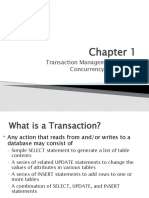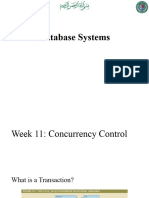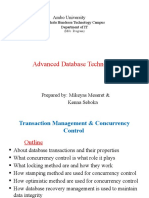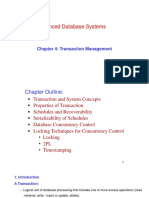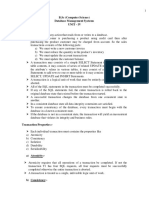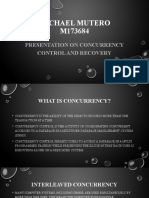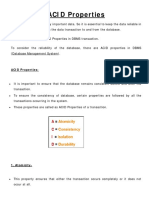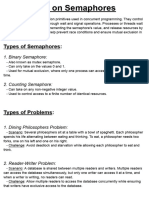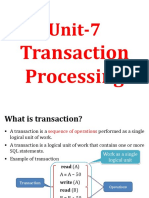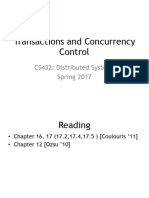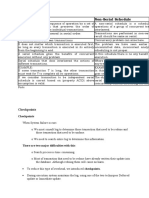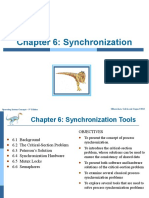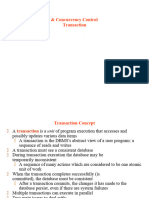0% found this document useful (0 votes)
23 views51 pagesLec 6 Transaction Management and Concurrency Control
The document discusses transaction management and concurrency control in databases, defining a transaction as a logical unit of work that must be completed or aborted entirely. It outlines key properties of transactions, such as atomicity, durability, isolation, and serializability, and explains the importance of concurrency control to prevent issues like lost updates and inconsistent retrievals. Additionally, it covers various techniques for managing concurrency, including locking methods, time stamping, and optimistic methods, as well as recovery management to restore databases to a consistent state after failures.
Uploaded by
mhariskhan513Copyright
© © All Rights Reserved
We take content rights seriously. If you suspect this is your content, claim it here.
Available Formats
Download as PDF, TXT or read online on Scribd
0% found this document useful (0 votes)
23 views51 pagesLec 6 Transaction Management and Concurrency Control
The document discusses transaction management and concurrency control in databases, defining a transaction as a logical unit of work that must be completed or aborted entirely. It outlines key properties of transactions, such as atomicity, durability, isolation, and serializability, and explains the importance of concurrency control to prevent issues like lost updates and inconsistent retrievals. Additionally, it covers various techniques for managing concurrency, including locking methods, time stamping, and optimistic methods, as well as recovery management to restore databases to a consistent state after failures.
Uploaded by
mhariskhan513Copyright
© © All Rights Reserved
We take content rights seriously. If you suspect this is your content, claim it here.
Available Formats
Download as PDF, TXT or read online on Scribd
/ 51







